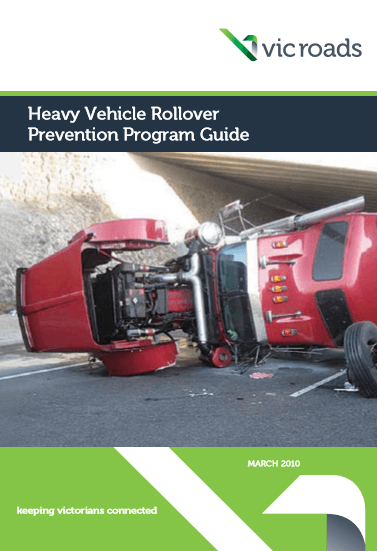Heavy Vehicle Rollover Prevention Program – Code of Behaviour
A code of behaviour is an opportunity to allow everyone to have their say, to see the problems others face, and to collectively provide a workable solution to that issue. This should be developed from the framework provided, but you need to add or customise it to suit your particular freight task issues.
It’s not a driver or management-driven objective – everyone can be involved, even members of the community. It has been shown to work best if you involve, but not direct, people to identify and deliver solutions. It is a self imposed code of behaviour – you own it and you maintain it.
Please feel free to discuss with your local Transport Safety Services (TSS) officers if you require information or advice in developing a code.
To provide a safe system of operating heavy vehicles under our control, (insert company name) agrees to provide the following safe operating practices.
VEHICLE SELECTION
Issue
Heavy vehicles carrying loads are relatively unstable in certain circumstances.
Action
Electronic Braking Systems on heavy vehicles provide enhanced braking and stability. Ensuring that the company’s fleet of heavy vehicles & trailers are fitted with EBS with Roll Stability Programs will reduce the risk of rollover crashes.
TRIP PLANNING
Issue
Major factors in rollover crashes include the route travelled, the vehicle load, the vehicle speed and the condition of the driver.
Action
Management will reduce the risk of a rollover crash by:
- Selecting routes that reduce the risk of a rollover crash through a route audit highlighting high risk locations such as sharp curves, poor alignment and rough road surfaces.
- Scheduling drivers during daylight so as reduce the risk of fatigue and poor visibility.
- Managing the carriage of loads to reduce the risk.
- Monitoring driver fatigue breaks and other fatigue related issues.
LOAD SECURITY
Issue
Load security is important for the safety of truck drivers and other road users. Load security is essential for preventing the load from shifting and the truck rolling over.
Action
- The load manager will ensure that appropriate restraints are used to restrain loads as per the ‘NTC Load Restraint Guidelines’.
- The loader will ensure that the load is positioned correctly on the truck to reduce the risk of the load shifting.
LOAD HEIGHT
Issue
The load height has effect on the centre of gravity of loaded trucks and is a strong factor in causing trucks rollovers.
Action
- Management will select trailers which as far as practicable reduce the overall height of the load.
- The load manager and loaders will ensure that the load height is within legal permissible limits and where possible load the vehicle to reduce the height of the load as much as practicable.
MASS LIMITS
Issue
Overloaded trucks can reduce braking performance, cause damage to vehicles as well as damaging roads and bridges.
Action
- Management will ensure that systems are in place to ensure that trucks are loaded to within legal mass limits.
- Management will endeavour to purchase trailers with axle weight measuring devices fitted.
- For vehicles allowed to travel at higher mass limits, appropriate permits will be obtained by management.
- Where possible weighbridges will be used to check on vehicle mass.
SPEED OF VEHICLES
Issue
Vehicles travelling at inappropriate speeds have a high risk of a rollover crash (especially on curves).
Action
- Management will ensure that all drivers are trained about truck rollovers and inappropriate speed.
- Management will monitor speed infringements such as speed camera fines and counsel drivers that get fines.


